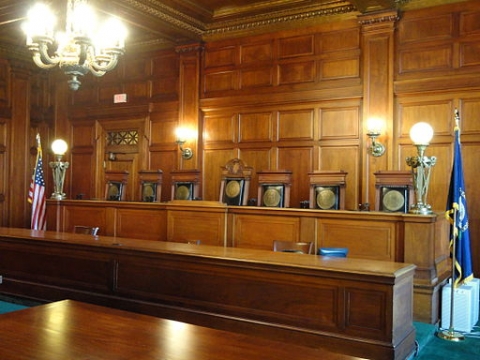Beyond Headlines: Federal Courts Weigh in on Kentucky's Electioneering Law, But What Does It Realistically Mean for Election Day?

by: Chris Stewart
Every state in the nation and the District of Columbia impose restrictions on campaigning around polling places. These buffer zones vary in size and degree of strictness, and their goal is to prevent voter intimidation and election fraud. In Kentucky KRS 117.235(3) places a ban on “electioneering communications” within 300 feet of a polling place during the hours that polls are open.
John Russell owns an auto body shop in Northern Kentucky that falls within the proscribed zone. Since Mr. Russell cannot advertise on behalf of candidates at his business on Election Day under this law, he filed a claim that the statute violated his constitutional right to free speech. Mr. Russell stated in his complaint that he not only intends to have political signs on his property on Election Day, but that he further intends to stand outside his business, wave signs, and pass out leaflets to prospective voters.
The U.S. District Court for the Eastern District of Kentucky agreed with Russell’s argument, striking down the law as unconstitutional. In its opinion, the court referenced two previous cases. The first, from the Supreme Court in 1992, ruled that Tennessee’s 100-foot ban was sufficiently narrow to be constitutional. The second, from the Sixth Circuit Court of Appeals in 2004, ruled that Kentucky’s previous 500-foot ban was overly broad and violated the Constitution. The district court held that KRS 117.235, which fell between these ranges at 300 feet, impinged Russell’s First Amendment right to free speech and was not sufficiently tailored to prevent voter fraud.
The district court offered little in the way of analysis, concluding merely that the court “fails to see how the typical stationary yard sign could ever intimidate a voter or abet election fraud, unless it was blocking the entrance to the polling place.” While this is a conclusion of sorts, it does little to actually address the constitutional question at issue.
The Court of Appeals for the Sixth Circuit issued a partial stay in this case. Effectively, the court of appeals reinstated the law as it applies to public property. Most Kentucky polling places are located on public land, and for those located in private entities, the ban is still in effect at the polling places. For people like Russell, however, who find themselves with businesses or private residences within the 300-foot buffer zone, they may campaign as they choose this November 4, so long as they confine the activities to their property and do not create a disturbance to voters.
The Sixth Circuit’s decision, however, was just a stay, effective for the 2014 election. The court will eventually hear Kentucky’s appeal on the merits. The key question will be whether the state’s 300-foot ban is necessary to prevent voter fraud and intimidation.
If the Sixth Circuit agrees with the district court on the merits, Kentucky legislators will doubtless act quickly to enact a new statute banning electioneering at the polls. If that happens, then a new law will probably need to carve out an exception for private property owners. Interestingly, the prior 500-foot zone included this very exception, but when the state re-wrote the law after the Sixth Circuit’s 2004 decision invalidating it, the legislature did not include the private property exception. This omission may have proved fatal for the 2014 litigation.
The real-world impact for Election Day will likely be increased campaigning near polling sites. Whether this opens the door to voter intimidation or undue pressure on voters – thwarting the aim of the law – remains to be seen. Expect to see more signs and campaign workers on private property close to busy precincts. Given that the U.S. Senate race between Mitch McConnell and Alison Lundergan Grimes is both very close and extremely heated – with the margin of victory likely to be tight – we should expect to see vigorous campaigning on behalf of these candidates, and others, near the polls. This litigation makes that campaigning a tad bit easier.
